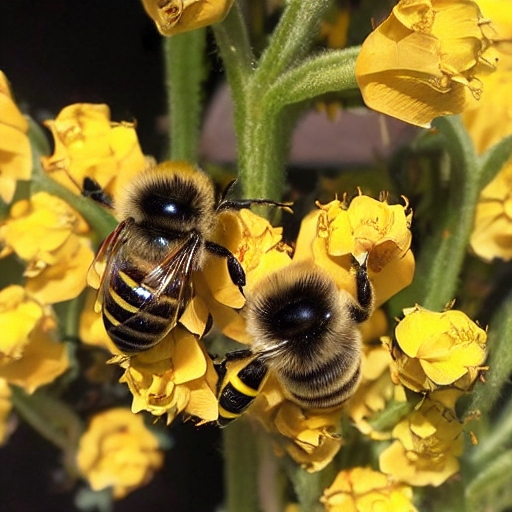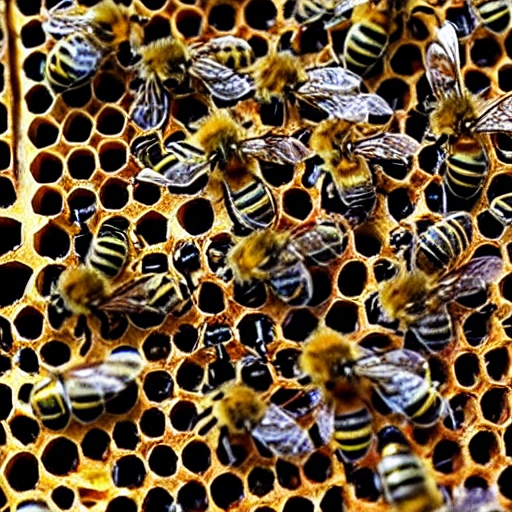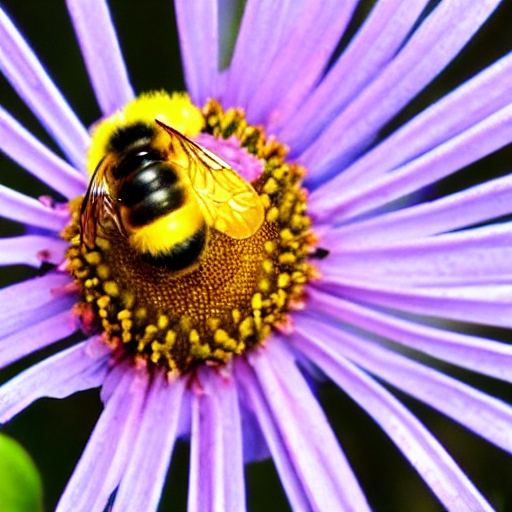Key Takeaways: The Weight of Individual Bees
- Understanding Individual Bee Weight
- A worker bee typically weighs about 90 milligrams, equivalent to less than half a gram. Despite their small size, individual bees play a crucial role in pollination and honey production, highlighting the significance of these tiny insects in our ecosystem.
- Variations in Bee Weight
- Bee weight varies based on factors such as species and role within the hive. Queens tend to be heavier than workers due to their larger size and reproductive duties, while drones are the heaviest as they mate with queens. Each bee’s weight corresponds to its specific function within the colony.
- Implications of Weight on Flight Efficiency
- Bees adjust their weight for optimal flight performance, demonstrating remarkable aerodynamic skills. Their ability to carry significant loads of nectar and pollen back to the hive showcases the intricate biological mechanisms that enable these insects to navigate diverse landscapes with agility and precision.
The Fascinating World of Bees

Bees, those small insects we see in gardens, are important for nature. They don’t just make honey; they also help plants grow by moving pollen.
One-third of the food we consume is directly or indirectly reliant on pollination by bees. Their significance in maintaining biodiversity and agricultural productivity cannot be overstated.
A Miracle Worker: The Honey Bee
Honey bees are known for their social structure and teamwork. A colony has only one queen alone, a few hundred drones, and tens of thousands of worker bees.
Female worker bees, the majority of the colony, do many jobs. They gather nectar and pollen, care for the young, and guard the hive. These bees are incredible—they collect pollen with special hairs and drink nectar using their long proboscis.
The pollen collected is food for larvae in the beekeeper hive. Collecting pollen helps bees and plants. It makes sure plants have diverse genes.
The Weighty Question: How Much Do Bees Weigh?
Now, let’s ask: How heavy is one bee? A worker bee’s weight changes based on age, job, and type.
Usually, a worker bee weighs about 90-100 milligrams. That’s one pound, less than half a gram! Even though they’re small, they’re vital for our environment.
Thinking about a colony with thousands of bees is amazing. They work together tirelessly. It’s surprising to think about how much they weigh together. Each bee might seem light, but in the hive, with honey and nectar, their weight adds up.
Weight of a Single Bee

The Average Weight of a Worker Bee
When we think of bees, we imagine them buzzing around flowers, gathering nectar and pollen. But have you thought about how heavy one bee is? On average, a worker bee weighs about 90 milligrams.
It’s lighter than a paperclip! Even though they’re small, bees are vital for pollination and making honey in the hive.
Variances in Weight Based on Species and Role Within the Hive
Bee weight changes based on species and role. Queens are usually heavier than workers because they’re bigger and have reproductive duties.
However, drones, male bees, are heavier. They mate with queens. This shows how bees have different roles in the colony’s social structure.
Each bee’s weight matches its job in the hive. They find nectar and care for larvae. Bees move around flowers and talk with dances. They do their work perfectly and stay the right weight for flying and working well.
During honey flow or rainy seasons, bees change their weight. They do this based on food and energy needs. This helps them work well, both collecting honey and nectar and guarding the hive.
Let’s learn about honeybees. Each bee visits 50-100 flowers per in one trip alone! They balance weight and work well. Next time you see a bee, appreciate its skills. Even though it’s light, it does amazing work!
Weight of a Bee Colony

Total Weight of a Typical Honeybee Colony
When we consider a bee colony’s weight, it’s not just about counting bees. A hive can weigh 30 to 100 pounds. This depends on hive size, bee number, and stored honey and pollen.
The weight shows how the whole community works together. In a hive, different parts add to the weight of one hive.
The queen bee lays eggs and keeps order. She’s vital for the colony. Worker bees do most tasks. They gather food and care for larvae. They also affect the colony’s weight.
Factors Influencing the Overall Weight of a Colony
Bee colony weight changes yearly. Seasons and hive activities affect it. In spring and summer, with more nectar, colonies get heavier.
Winter means less nectar flow, so colonies eat stored food. This makes them lighter. Colony size also matters for weight.
Larger hives, housing a greater number of bees, tend to have a higher total weight. Beekeepers regularly monitor the weights of their hives. This is part of their management practices. This ensures that colonies possess sufficient food reserves to endure periods of scarcity. It also assists in determining whether additional feeding is necessary.
Knowing a colony’s weight helps us understand its dynamics. Every bee’s action affects its weight. Foraging, caring for larvae, and making honeycombs all add up. This shapes a healthy hive’s weight.
Comparisons to everyday objects for perspective
How much does one bee weigh compared to a common household item?
When we think about the weight of a bee, it can be quite surprising how something so small can have such significance in the world of nature. A single-worker honeybee typically weighs around 0.08 grams.
To put this into perspective, imagine holding a penny in your hand – that’s roughly the weight of two worker bees combined! It’s truly fascinating to consider the delicate balance of nature and how these tiny creatures play a crucial role in our ecosystem.
In comparison to a common household item, one worker’s honeybee weighs about the same as a standard paperclip. Next time you’re at your desk and reach for a paperclip, take a moment to appreciate the incredible intricacy of nature’s design encapsulated in that tiny metal clip.
The weight difference between something as simple as a paperclip and a worker bee may seem insignificant on its own, but when we think about the collective weight of an entire colony working tirelessly together, it becomes clear just how vital each bee is. Another interesting comparison is that one worker’s honeybee weighs approximately the same as an aspirin tablet.
So, the next time you take an aspirin for a headache or pain relief, consider for a moment the remarkable strength and resilience packed into those little buzzing beings flying around our gardens and fields. Each bee carries out its tasks with precision and dedication, contributing to the greater good of its hive and our environment.
If we compare the weight of one worker’s honeybee to something edible like an M&M chocolate candy, you might be surprised to learn that they are quite similar in weight. One M&M candy is roughly equivalent in weight to about 8-10 worker bees!
It’s astonishing to think about how much effort goes into collecting nectar from flowers and transforming it into delicious honey for these industrious insects; their commitment is truly commendable. One last comparison for perspective: A single-worker honeybee weighs less than half of what an average grain of rice weighs!
This seemingly minuscule creature holds immense power when considering its role in pollinating crops and contributing to our food sources worldwide. So, next time you see a grain of rice or enjoy some delicious food pollinated by bees, remember just how much these tiny creatures carry on their delicate wings.
Fun Facts About Bee Weight
The Impact of Nectar and Pollen Consumption on Individual Bee Weight
When we ponder the question of how much bees weigh, a fascinating aspect to consider is how their diet influences their weight. Bees are diligent foragers, buzzing from flower to flower to collect nectar and pollen. Interestingly, a bee can consume nectar that amounts to half her weight in just one foraging trip!
This sugary liquid not only provides energy but also contributes significantly to her overall weight. Furthermore, pollen—rich in protein and essential nutrients—enhances the bee’s weight as she gathers it to bring it back to the hive.
One intriguing fact is that the weight difference between bees within a colony can be quite significant. For instance, worker bees who collect more nectar and pollen tend to be heavier than other bees with different roles such as the other queen bees or drones.
This variation in individual weights showcases the specialized functions each bee performs within the intricate social structure of a hive. Moreover, as bees consume nectar and pollen, they store these provisions within their bodies before returning to the hive.
This storage not only impacts their weight but also contributes to maintaining the delicate balance of resources within the colony. The collective effort of all worker bees diligently gathering food highlights how crucial these tiny creatures are in sustaining their entire community.
How Bees Adjust Their Weight for Flight Efficiency
To grasp how much bees weigh impacts their ability to fly efficiently is truly fascinating. Bees are exemplary aviators, zipping through the air with agility and grace.
However, flying requires energy and precise adjustments based on body weight. As mentioned earlier, bees can carry significant loads of nectar and pollen back to the hive—a feat that necessitates an understanding of flight dynamics.
Bees have mastered the art of adjusting their body weight for optimal flight performance. When laden with provisions gathered from various nectar sources, a bee must adapt her flying technique by altering wing movement patterns or adjusting speed accordingly.
This remarkable ability highlights the intricate biological mechanisms that enable these insects to navigate diverse landscapes in search of food. Furthermore, researchers have discovered that bees exhibit astonishing precision when it comes to calculating load-bearing capacity during flight.
By assessing how much they weigh about what they are carrying, these diligent insects showcase exceptional aerodynamic skills honed over millions of years of evolution. Witnessing a bee gracefully maneuver through obstacles while laden with nectar exemplifies nature’s ingenuity at its finest.
The Intriguing World of Bee Weights

Appreciating the Weighty Matters of Bees
As we delve into the magnificent realm of bee weights, we uncover a world filled with intricate details and fascinating discoveries. From the humble worker bees tirelessly toiling in hives to the majestic queen bee reigning supreme, each member of the colony carries its weight – quite literally. The significance of understanding how much bees weigh extends beyond mere numbers; it offers a glimpse into the inner workings of these remarkable creatures and their vital roles in our ecosystem.
Weighing In on Bee Conservation
The delicate balance of nature hinges on the survival and well-being of bees, those industrious pollinators responsible for a third of our global food supply. By shedding light on bee weights, we gain a deeper appreciation for their resilience and adaptability in the face of environmental challenges. As we strive to protect these vital insects, knowledge about their weights serves as a crucial tool in conservation efforts, ensuring that future generations can continue to benefit from their invaluable contributions.
Embracing Bee Weight Diversity
From the tiny but mighty worker honey bees buzzing busily from flower to flower to the regal queen bee presiding over her bustling hive, each bee species boasts its unique weight characteristics. Exploring the diversity in bee weights not only showcases nature’s remarkable variety but also underscores the interconnectedness of all living beings. Just as no two flowers are alike in a meadow, so too are no two bees identical in weight – a testament to nature’s boundless creativity and complexity.
Celebrating The Bountiful World Of Bees
As we ponder on ‘How much do bees weigh,’ let us marvel at these wondrous creatures that play an indispensable role in our lives. Despite their minuscule size relative to humans, bees carry within them immense significance their entire life – from pollinating crops that sustain us to producing golden honey that sweetens our days.
By understanding and appreciating their weights, we gain insight into the intricate web of life woven by these extraordinary insects. So let us cherish and protect our buzzing friends, for they hold within them not just nectar and pollen but also the secrets to a thriving ecosystem.
The Buzzing Truth About Bee Weight

Reflecting on the Weighty World of Bees
As we delve into the intricate world of bee colonies and the remarkable creatures that inhabit them, one can’t help but marvel at the weighty responsibilities carried by these tiny insects. From the diligent worker honey bees to the majestic queen bee, each member plays a crucial role in maintaining the delicate balance within their buzzing community.
Appreciating Nature’s Little Wonders
While it may come as a surprise to, a single worker honey bee typically weighs about one-tenth of a gram. This seemingly insignificant weight belies the enormous impact these small creatures have on our ecosystem. Their ability to pollinate plants and produce honey is essential for sustaining life on our planet.
Celebrating the Collective Efforts of Bee Colonies
When we consider just how many bees make up a thriving colony, it’s awe-inspiring to imagine the combined weight of all those buzzing bodies. A healthy honeybee colony can consist of tens of thousands of individuals, each contributing to the overall success and survival of their community. Together, they create a harmonious symphony of industry and cooperation.
Looking Towards a Brighter Future
As we wrap up our exploration into the weighty world of bees, let us take a moment to appreciate these remarkable insects for all that they do. Despite their tiny individual weights, when united in purpose, bees wield incredible power to shape our natural world for the better.
Let’s continue to support and protect these vital pollinators so that they may thrive and continue their essential work for generations to come. While bees may be small in size and weight individually, their collective impact on our planet is immeasurable.
Let us treasure and protect these industrious creatures as they go about their vital work in harmony with nature’s rhythms. In doing so, we ensure a brighter future not just for bees but for all living beings who rely on them for our food supply and ecosystem health.
Neutralize Bees with D-Termination: Las Vegas’ Leading Pest Control Solution!

Struggling with bee problems on your Las Vegas property? Trust D-Termination to help. Our skilled team specializes in eradicating bee infestations, restoring comfort and peace to your environment. Say goodbye to bees—choose D-Termination for effective pest control today!
Reach out to us at 702-919-6310 or visit dtermination.com to schedule your bee control service and reclaim your space from these bothersome insects.
Frequently Asked Questions:
The weight of a bee is typically measured in milligrams or grams, not pounds.
Approximately 10,000 to 12,000 bees make up 3 pounds.
The average mass of a bee ranges from about 80 to 100 milligrams.
4000 bees would weigh around 3 to 4 pounds.







